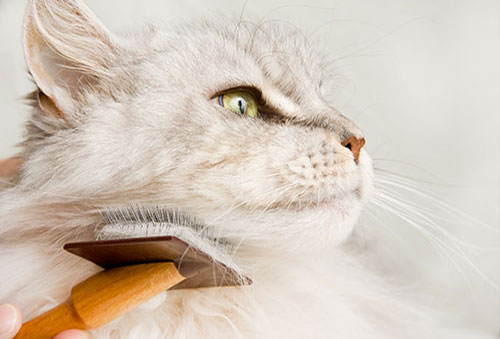6 Helpful Reminders to Start the Year Off Right
1. Walk Your Pet
This resolution comes just in time for January, which is Walk Your Pet Month. Walking your pet provides the exercise he needs, the bonding time he craves, and the discipline required to adopt good behavior. The benefits of being walked aren’t limited to dogs. Cats can be trained to enjoy a nice stroll, too!
Train your cat to walk on a leash
Use a harness, not a collar. Get her used to it by putting it on before mealtime, then feeding her. Repeat for several days, then add the leash and let her walk around the house with it for several days.
Put a treat on the floor about a foot away from your cat, then gently tug on the leash to guide her to the treat. Do this repeatedly until your cat gets the idea. Be patient!
2. Stay on Top of Your Pet’s Health
This year, resolve to keep your pet on a regular checkup schedule. This can help you avoid preventable health problems and complications. The earlier a problem is detected, the sooner it can be treated, which may save your pet unnecessary suffering and you an expensive surprise. Also, get organized about tracking your pet’s veterinarian visits and health issues. Keep a file that contains the dates of inoculations, medications, tests, any conditions or concerns your vet mentions, and any issues you may notice. Your records of your pet’s medical history can help provide valuable information to your veterinarian.
3. Feed Healthy Pet Foods
Wanting to feed your dog or cat healthier food is a no-brainer. However, with a myriad of options to consider, choosing the healthiest pet food on the market can get confusing. Look for foods that are made with your pet's age, breed size and special needs in mind. You’ll want to be sure you’re covering the basics: wholesome, natural ingredients with vitamins and minerals to provide your pet with complete and balanced nutrition at every stage of life. Talk to your veterinarian about what might work best for your pet.
When considering which food will be the healthiest for your pet, always read the package label. Look for high-quality, natural ingredients at the start of the ingredient list. The first ingredient listed makes up the largest portion of the food. Choosing pet foods with real poultry, meat or fish as the first ingredient is a great way to start feeding your dog or cat healthy. You may prefer to avoid ingredients like poultry by-product meals, corn, wheat, soy, or artificial flavors and preservatives, especially if they’re at the beginning of the ingredients label.
4. Brush Regularly
If your pet’s teeth haven’t been checked or cleaned in a while, this is the time. Once they’ve been professionally scaled and polished, help keep them clean by brushing them once a week. Healthy teeth and gums are essential for your pet.
A scratch-proof way to brush your cat’s teeth
If your cat is skittish about having her teeth brushed, bundle her up in a blanket or towel to keep her from lashing out or running off.
5. Groom Regularly
If your pet goes to a groomer, chances are you’re already on a four- to eight-week schedule. If your pet is the type that doesn’t need haircuts, grooming is still important. Brushing helps remove dirt, reduces shedding, spreads natural oils and prevents matting. Bathing when necessary, nail clipping and ear cleaning will not only help make your pet smell and look better, but can also help lessen discomfort and keep certain health issues at bay.
6. Update Your Pet’s I.D.
This is a good time to make sure your dog or cat’s I.D. tag is current. If you’ve been considering a microchip for permanent identification, make this the year you do it. If you have an electric fence, check the batteries on a regular schedule, starting now. And always put the collar on your pet, even if he’s very well trained. If there’s no warning to deter him, he’s likely to eventually push his boundaries.
After you make your resolutions, there’s just one more thing to do: Enjoy your four-legged family members all year long!







